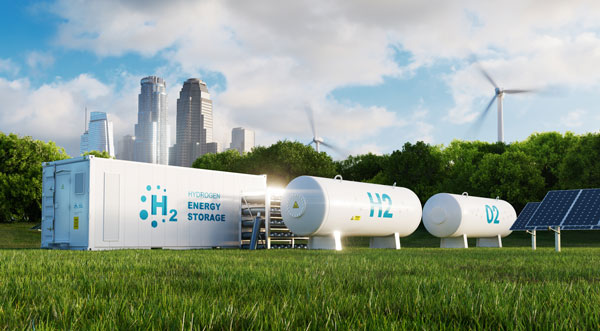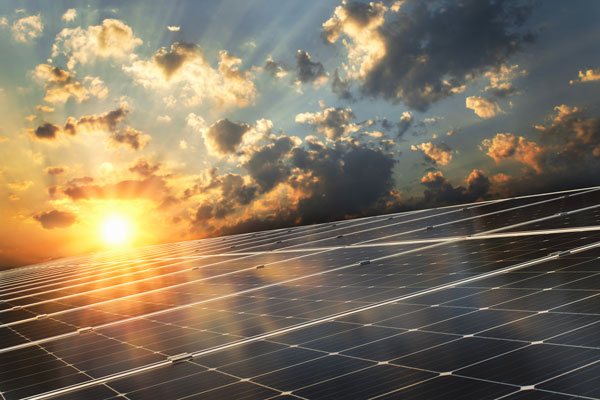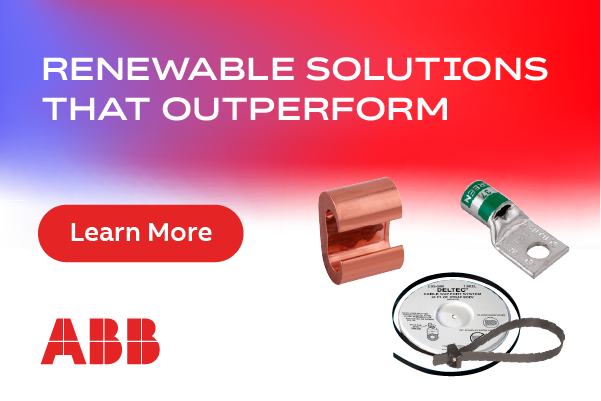Off the Grid— Distributed and greener energy networks are here
Green Energy Network
As we work toward a greener and more responsive 21st century energy network, we answer the needs of both the earth and society. Today’s leaders see that the knowledge and technologies exist now to help enterprises realize the opportunities and significant returns related to the changes. Many of us will take on new roles such as power producers, power consumers, and prosumers --- those who, in the context of distributed energy resources, are energy consumers while also individually capable of storing and producing their own electricity.
The changes require a new mindset in the participants, and will require them to prepare for new responsibilities and ways of life. The evolution does not need to be intimidating. Industry leaders can see opportunities in this situation, a potential source of revenue from a mosaic of green energy contributed by many sources, and delivered to those in need.
At the crux of this shift is the current 20th century electric grid, which is steadily transitioning away from a hub-and-spoke model, and more towards one where everyone contributes. Centralized power generation will exist for decades to come, but as a society we are producing power much closer to where we consume it. Energy sources that used to be the purview of the central utility are now parked in our garages, installed on our roofs, and stored in various methods to be used at peak times.
By observing conditions, teams today see that successful options are immediately available through leveraging automation to artfully choreograph the interoperability of many energy forms, where solar, wind, energy storage, hydro, geothermal, and hydrocarbons are all at play. Increasing support for the energy movement makes it possible to undergo the transition in qa secure and reliable way, reducing risk and maximizing returns.
Changes Lead to a Stronger Network
“A grid-connected system allows you to power your home or small business with renewable energy during those periods (daily as well as seasonally) when the sun is shining, the water in running, or the wind is blowing. Any excess electricity you produce is fed back into the grid,” reports the U.S. Department of Energy. Inherent in this process is electrification – the process of using electricity to power assets traditionally powered by other sources such as gas or diesel.

Many refineries are already familiar with these opportunities; they might, for example, rely on turbines that contribute to refinery microgrids. In addition, to take advantage of available bountiful green energy, offshore drilling platforms have added alternate energy sources, such as solar and wind, to support their operations. While microgrids are part of the larger grid, they can also operate to serve and balance solely the owner’s energy needs.
Other industries also are seeing the benefits of the evolution. An airport in Pennsylvania has removed itself from the grid by producing its own electricity via wind, solar, and natural gas. Remarkably, for a brief moment in May of 2022, California fully powered itself with renewable energy.
What is required is a kind of harmony in an energy network — a new matrix with onsite and offsite power. Each example gives a glimpse at the success every organization, and society as a whole, can seize. Manufacturers and other businesses are learning from each other and from control automation leaders about designing systems and processes that help efficiently balance the power produced and the power consumed.
Energy transformation is occurring today with a blend of traditional and non-traditional sources that will power the energy network. As the energy network matures, industrial producers, consumers, and prosumers need to know their optimization priorities. Do they care most about a continuous process, extra revenue, or reliability? Of course, the answer is “all of it.”
The harmony required rises from multiple energy suppliers that must network in ways that add to the desired outcomes. Leaders envision methods to operate and control that network. Methods exist — both in technology and analysis —that guide users to adjust the priorities based on the opportunities present at the time. At some moments a continuous process will be most optimal, while at others the opportunity for revenue will peak. And all must be positioned with a safety-first mindset.
Accurate and Immediate Data is Key
The IEEE states that, “The relationship between the smart grid and renewable energy revolves around gathering data. For example, wind farms use mechanical gears that require each link to support multiple sensors. Each sensor is able to note current climate and environmental conditions. This information is then quickly sent through the grid to alert the utility of any issues, which improves both the quality of service and safety.”
Possessing historical and up-to-the-moment data will become more important to design balance among priorities for energy-network participants. This will require a sensor-to-enterprise approach, gathering information from every enterprise segment.
Automation systems integrate with distributed energy resource management systems (DERMS) and other sources of energy to orchestrate elements of the grid/network and deliver reliable operation. High-quality sensors throughout the process and automation system help ensure accurate and secure data collection, and assist with data aggregation, management, and integration with business systems.
Using the data will become part of the infrastructure of the enterprise to help transform how energy is produced, distributed, and consumed. Digitalization, a data-strengthened infrastructure, can leverage artificial intelligence (AI), machine learning, and all types of data networking technology. Of course, the infrastructure must also be robust and cyber secure.
Context around the data and all the equipment assists in making decisions; it can be made richer by AI and data insights, freeing up staff to work on other priorities.
Data will also assist in another challenge: how to integrate the technologies. Data can guide teams in considering how to integrate and coexist on the new energy network. Facing the changes ahead, leaders have great opportunities not only for optimization, but also for establishing partnerships with other organizations experienced in similar conditions and with similar choices. This critical transition, from one grid to a new energy network, can bring us to innovate with each other while remembering that one size doesn’t fit all. Everyone has skin in this game.

Moving Ahead with Confidence
The new energy network will be integrated, distributed, and greener. As we contribute to the solution, society will learn to advance the state of the grid to a more usable energy network. Together, all groups can imagine the transition moving from what exists today to what is needed tomorrow. We will embrace the change that’s coming and see the opportunities and risks. Then move forward.
Establish long-term relationships with providers who will learn about your enterprise and develop solutions that balance your options to deliver desired outcomes. Examining data and applying technology for a distributed and well-networked grid makes the grid-to-network transition less intimidating. By sharing knowledge and becoming partners in an agency of change, all contributors will see a rich solution portfolio that delivers strong returns.
Mark Brown is Systems Consultant at Yokogawa, which provides Industrial Automation and Test and Measurement solutions.
Yokogawa | www.yokogawa.com
Author: Mark Brown









